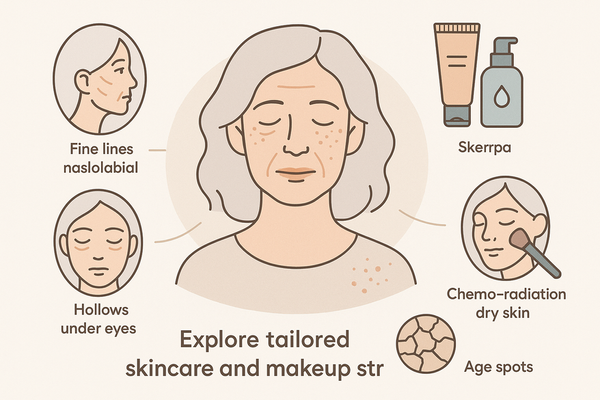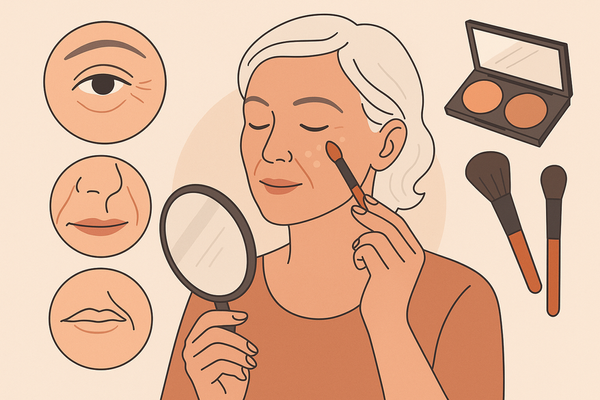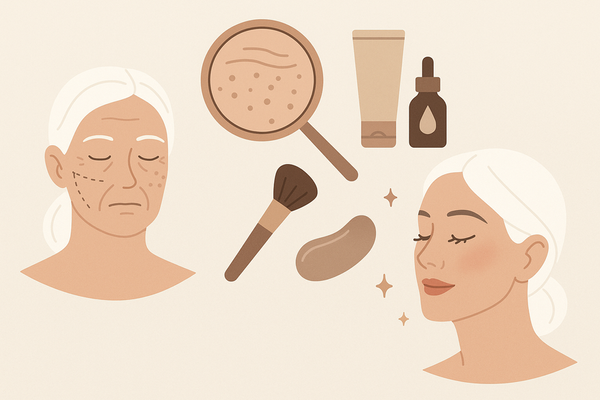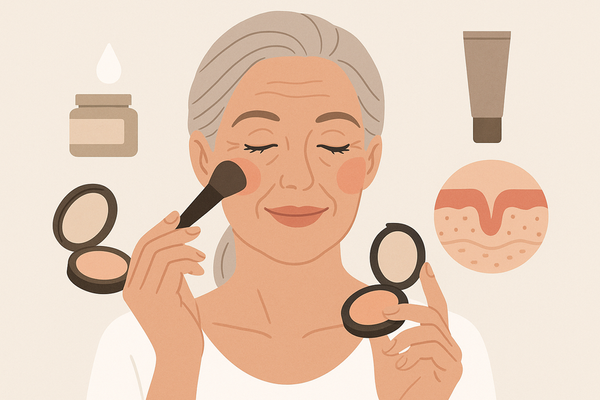Setting Powder vs Spray: Your Guide to All-Day Makeup Wear
Explore the benefits of setting powder vs spray to make your makeup last all day, prevent foundation oxidation, and discover touch-up tips on the go.
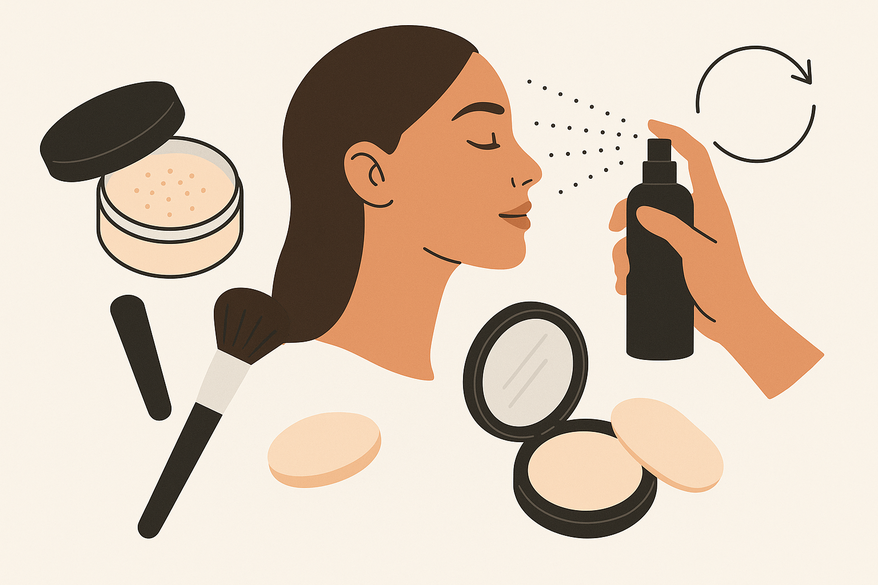
Estimated reading time: 8 minutes
Key Takeaways
- Setting powder absorbs oil, blurs imperfections, and creates a matte base.
- Setting spray seals pigments, controls finish (matte or dewy), and adds hydration.
- Ideal routines combine both: powder for oily zones, spray for overall locking and refresh.
- On‐the‐go fixes include blotting papers, mini powder compacts, and travel sprays.
- Prevent oxidation with antioxidant primers and immediate powder setting.
Table of Contents
- Introduction
- Deep Dive: Powder vs Spray
- All‐Day Techniques
- Common Challenges
- Quick Touch‐Up Tips
- Conclusion
Introduction
Makeup longevity is a top concern for anyone who wants fresh, flawless skin from morning till night. The central debate—setting powder vs spray—helps us understand two key product categories for long‐wear makeup. Setting powders (loose or pressed) work by absorbing oil and creating a matte canvas. Setting sprays (water‐based mists) seal and finish makeup with a barrier that resists smudges and transfers.
This post will show you:
- The science behind setting powder vs spray
- A direct comparison of their features and ideal uses
- Full routines and quick “makeup meltdown” fixes
- Tips to prevent foundation oxidation
- On‐the‐go touch‐up strategies
- Final takeaways for personalizing your routine
For personalized AI‐driven feedback on your application, try Makeup Check AI, which analyzes your look and offers tailored tips.
By the end, you’ll know exactly how to make makeup last all day—whether you favor a matte, natural, or dewy finish.
Deep Dive: Setting Powder vs Spray
What Is Setting Powder?
Setting powder is a finely milled loose or pressed powder designed to lock in base products. It:
- Absorbs excess sebum and oil
- Blurs pores and fine lines
- Provides a matte or soft‐focus finish
- Allows “baking” under eyes for creaseless concealer
Mechanism: Micro‐particles bind to oil molecules on the skin surface, preventing foundation and concealer from migrating or creasing. In professional trials, powder application extended wear time by up to six hours on oily zones.
Sources:
NYX blog on setting spray vs powder
Gabriel Cosmetics guide on powder vs spray
What Is Setting Spray?
Setting spray is a water‐based mist applied as the last makeup step. It:
- Creates an invisible film to seal pigments
- Adds hydration or matte control, depending on formula
- Reduces powdery or cakey appearance
- Enhances finish with dewy, satin, or soft matte effects
Mechanism: Hydrophilic agents and film‐forming polymers lock powders and creams in place, resisting transfer, smudge, and creasing. In humid trials, a fine mist kept foundation true for over 12 hours.
Sources:
L’Oréal Paris article on powder vs spray
Gabriel Cosmetics guide on spray vs powder
Compare and Contrast
This head‐to‐head helps you choose based on:
- Application: Powder with brush or sponge; targeted placement. Spray from 6–8 inches; full‐face mist.
- Skin Types: Powder for oily/combination. Spray for dry/normal.
- Function: Powder mattifies; spray seals and hydrates.
- Finish: Powder yields matte to natural. Spray can deliver dewy, natural, or matte.
- Layering: Powder under/over makeup and for baking. Spray as final step or between cream layers.
- Portability: Powder needs brush/sponger. Spray is all‐in‐one bottle.
Scenario:
- Oily skin/hot weather → Powder locks oil (Gabrielle Cosmetics).
- Dry skin/glowy look → Spray adds moisture and glow (NYX, L’Oréal).
- Combined use → Powder then spray for maximum transfer‐resistance.
All‐Day Techniques
Comprehensive Routine Blueprint
- Skin Prep:
• Ultimate pre‐makeup skincare routine
• Moisturize according to skin type
• Prime: silicone‐based for oil control; hydrating for dry skin - Base Application:
• How to apply foundation evenly
• Concealer: dot and blend under eyes and on blemishes - Powder Set:
• Translucent powder on T‐zone, under eyes
• Tap off excess before pressing into skin - Color Layering:
• Cream blush/bronzer first
• Light powder dust between cream layers - Lock Step:
• Mist 6–8 inches away in X and T motions
• Let dry 10 seconds; avoid rubbing
Experience Tip: In bridal work, this blueprint kept makeup intact through 10+ hours. For more on AI‐enhanced beauty routines, see AI makeup coach and future of beauty tech.
Makeup Meltdown Fix
Midday shine, creasing, or fading can be tamed:
- Blot excess oil with blotting papers
- Reapply powder sparingly with a small puff
- Use a hydrating mist for dry or cakey areas
- Switch to mattifying spray for oily spots
Pro Tip: Carry individual blotting sheets for hygiene.
Pro Tips for All-Day Wear
- Layer powder between creams to lock each phase.
- Wait 30–60 seconds between layers for adhesion.
- Use two light mists of setting spray: final seal and midday refresh.
- Keep both mattifying and hydrating sprays on hand.
- Build in thin layers to avoid caking.
Common Challenges
Prevent Foundation Oxidation
Oxidation darkens foundation through oil and exposure. To prevent it:
- Use antioxidant primers (vitamin C, E).
- Set foundation immediately with a thin powder veil.
- Choose silicone‐based or oil‐free “long‐wear” formulas.
Sources:
L’Oréal Paris on powder vs spray
Gabriel Cosmetics guide on spray vs powder
Remedial Measures for Oxidation
- Blot oil immediately.
- Lightly dust translucent powder to stabilize pigment.
- Mist with pH‐balancing facial spray.
- Reinforce only problem zones; avoid heavy re‐layering.
Quick Touch-Up Tips
Essentials Kit
- Blotting papers
- Mini translucent powder compact
- Travel‐size setting spray (30 ml)
- Multi‐use sticks for blush, contour, or lip
- Pre‐moistened facial wipes or micellar pads
DIY Portable Solutions
- Decant setting spray into a small spritz bottle
- Keep a small brush for pinpoint powder
- Use single‐use hydrating pads before powder
On-the-Go Application Technique
- Blot Skin:
Press blotting paper on T-zone and chin; discard. - Precision Powder:
Dip mini brush or puff in powder; tap off excess; apply sparingly. - Finish with Spray:
Mist 6 inches away; pat gently; wait 10 seconds.
Conclusion
- Setting powder controls oil and mattifies; setting spray seals and refreshes.
- Powder is ideal for oily, heat‐prone days; spray for dry or dewy finishes.
- Key steps: skin prep, strategic layering, midday blotting, on-the-go touch-ups.
- Prevent oxidation with antioxidant primers and instant powder setting.
- Experiment to find your perfect matte vs dewy balance.
Invite your input: What’s your go-to makeup meltdown fix or touch-up routine? Share your favorite products for making makeup last all day!
FAQ
Q: Can I skip setting powder if I use a strong setting spray?
A: While some sprays seal makeup effectively, powder is unmatched at oil control and pore‐blurring. Combine both for best results.
Q: Which is better for oily skin—powder or spray?
A: Use powder on oily zones to mattify, then seal with a mattifying setting spray for all‐over hold.
Q: How often should I refresh with setting spray?
A: A light midday mist (6–8 inches away) revitalizes makeup and skin, especially in dry or humid climates.

